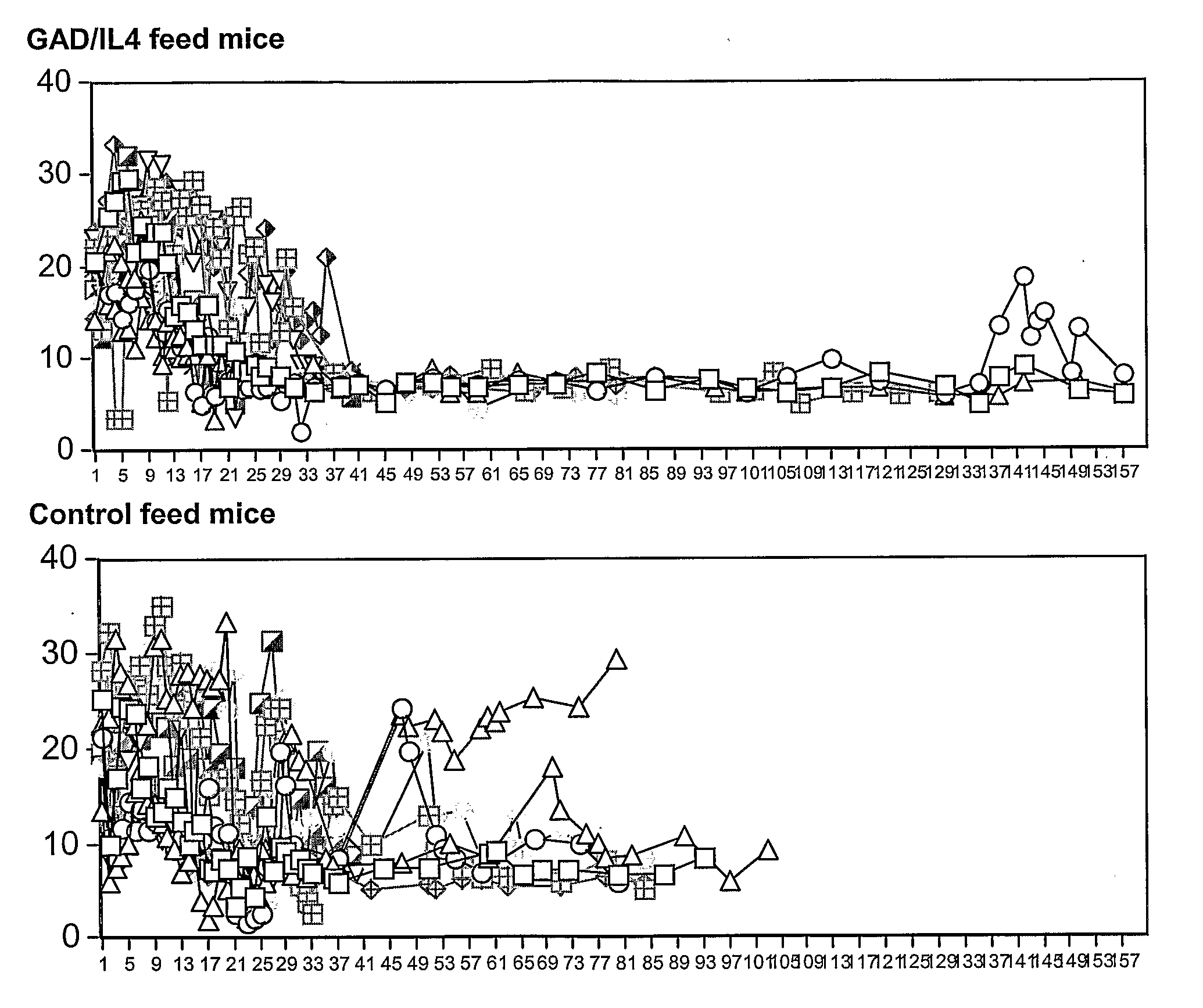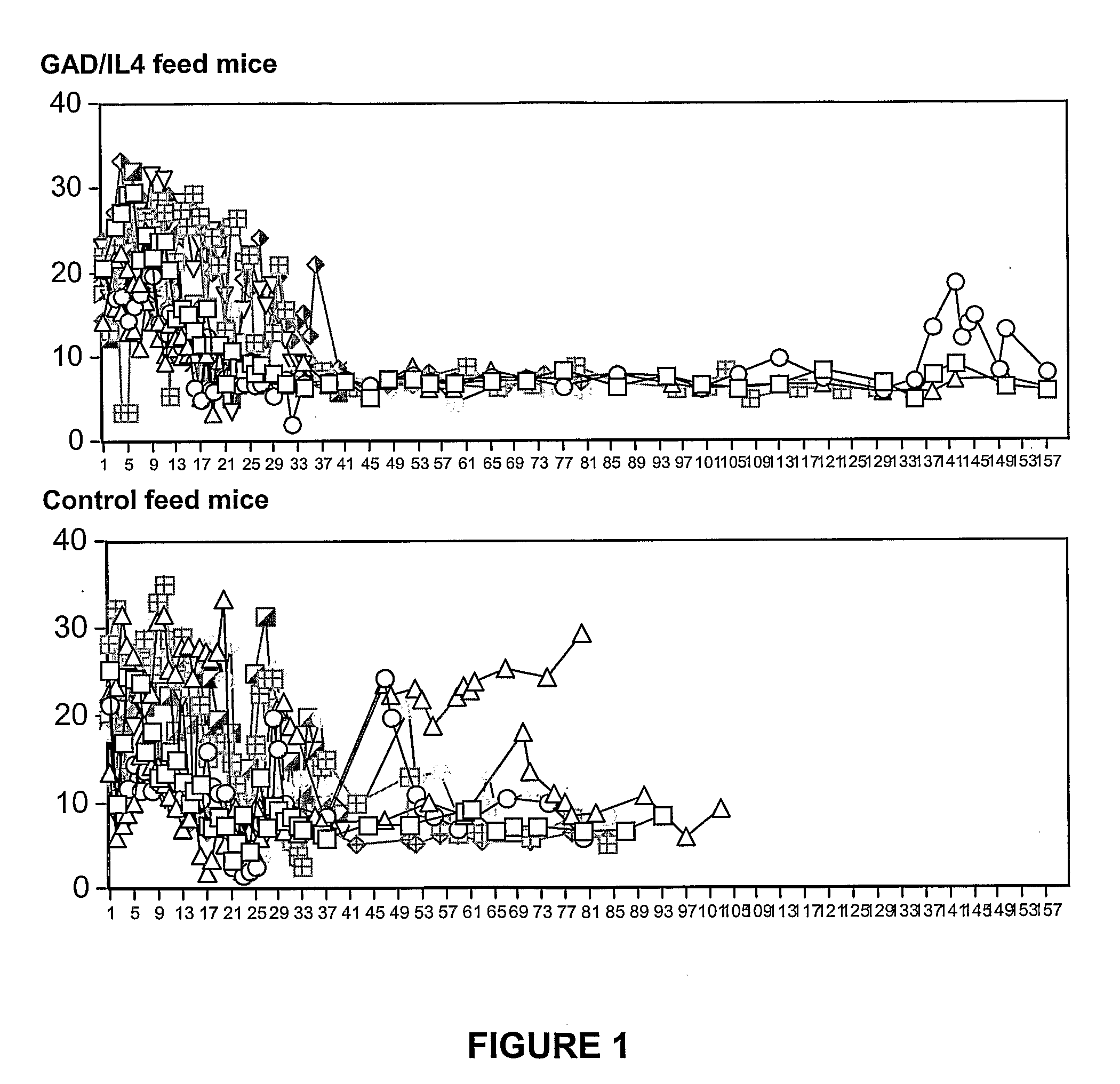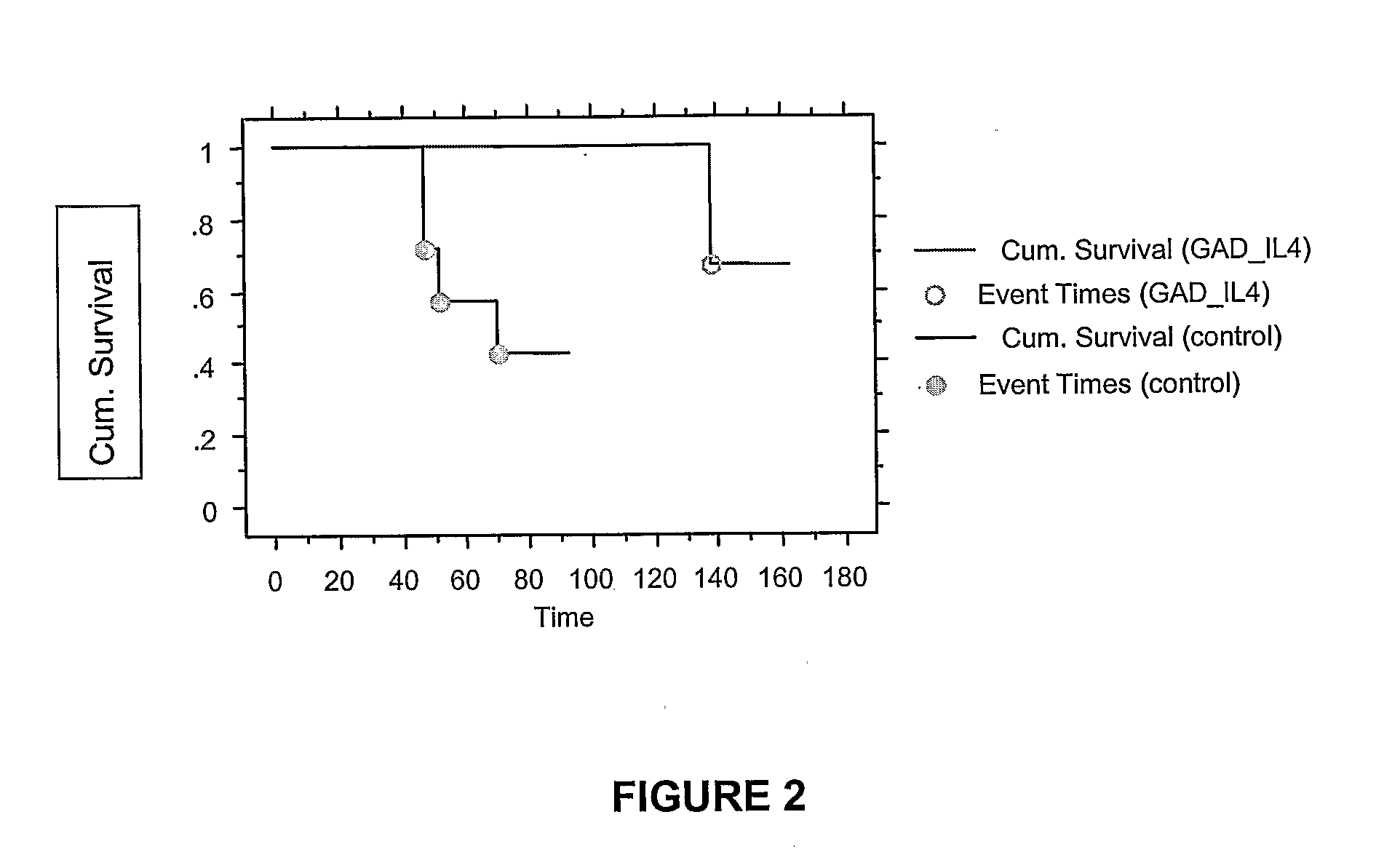Anti-T Cell and Autoantigen Treatment of Autoimmune Disease
a technology of autoimmune disease and anti-t cell, applied in the field of mammals' autoimmune disease treatment, can solve the problems of side effects, no safe therapy has yet been found, and complications of diabetes impair longevity and quality of life, and achieve the effect of effective treatmen
- Summary
- Abstract
- Description
- Claims
- Application Information
AI Technical Summary
Benefits of technology
Problems solved by technology
Method used
Image
Examples
example a
The Effect of Control Plant Feeding Versus GAD / IL-4 Plant Feeding on Blood Glucose Levels in Diabetic Female NOD Mice
[0126]Diabetic female NOD mice were identified by positive urine glucose followed by blood testing. Mice were selected for antibody therapy if blood glucose was greater than 16 mmol / l on 2 consecutive days. Mice were treated with daily insulin to keep blood glucose levels less than approx. 14 mmol / l. Some mice required twice daily insulin. Mice were stabilized and given anti CD3 mAb (5 μg) IV by tail vein injection for 6 days (d1-6). Mice that failed to achieve (on 2 consecutive days), blood sugars less than 20 mmol / l by 3 weeks were terminated. More than 85% of mice achieved this. At 2 to 3 weeks following anti CD3 mAb treatment, mice were given either control plant chow (empty vector, LN tobacco) or GAD-IL4 plant chow and followed daily for blood sugars. Insulin was stopped by 3 weeks in all mice. 10 mice were assigned to each treatment group, and expressed values a...
example b
Sequential Anti-CD3 and GAD / IL-4 Feeding in the NOD Mouse Model Showing Effect of Anti-CD3 and Sequential GAD / IL-4 Feeding on Th1 / Th2 T Cell Subsets
[0134]Female NOD mice were allowed to spontaneously develop diabetes and maintained glycemic control with insulin. Mice were treated daily with anti-CD3 mAb (5 μg) for 6 days and insulin was discontinued on reaching euglycemia. Mice were fed with oral GAD / IL-4, plant control diet or regular mouse chow for 4 weeks (n=3 per group). Mice were euthanized and serum was tested for anti-GAD IgG1 as measure of Th2 activity. GAD / IL-4 mice had the highest level of anti-GAD IgG1 antibodies (p=0.1) suggesting the benefit of anti-CD3 mAb with sequential GAD / IL-4 is related to Th2 skewing of T helper cell subsets.
Means Table for anti GAD IgG1 (1:1)Effect: groupCountMeanStd. Dev.Std. Err.plant31.131.273.157GAD / IL431.587.395.228regular31.336.201.116
Effect of Anti-CD3 and Sequential GAD / IL-4 on Ability to Prevent Adoptive Transfer of Diabetes
[0135]Female...
example c
Expression of Canine GAD65 and Canine IL-4 in Suspension Cultures
Dicot Binary Constructs for Expression in Tobacco Cells
[0139]A dicot binary vector, pDAB2457 (Sequence ID No. 1) for Agrobacterium-mediated plant transformation was constructed based on plasmids pDAB771, pDAB773 and pDAB2407. pDAB771 (FIG. 9A) contains the cassava vein mosaic virus promoter described in WO 97 / 48819 (CsVMV) fused to the 5′ UTR from Nicotiana tabacum osmotin gene (Plant Mol. Bio. 19:577-588 (1992); patent application US 2005102713) and a chimeric 3′ untranslated region consisting of 3′ UTRs from the Nicotiana tabacum osmotin gene (Plant Mol. Bio. 19:577-588 (1992); patent application US 2005102713) and from Agrobacterium tumefaciens plasmid Ti 15955 ORF24 (GenBank accession X00493). Located between the CsVMV promoter and ORF24 3′UTR are unique sites, NcoI and SacI, which were used for inserting genes of interest. pDAB773 (FIG. 9B) contains the RB7 matrix attachment region (MAR) (U.S. Pat. No. 5,773,689; ...
PUM
| Property | Measurement | Unit |
|---|---|---|
| Time | aaaaa | aaaaa |
| Time | aaaaa | aaaaa |
| Dimensionless property | aaaaa | aaaaa |
Abstract
Description
Claims
Application Information
 Login to view more
Login to view more - R&D Engineer
- R&D Manager
- IP Professional
- Industry Leading Data Capabilities
- Powerful AI technology
- Patent DNA Extraction
Browse by: Latest US Patents, China's latest patents, Technical Efficacy Thesaurus, Application Domain, Technology Topic.
© 2024 PatSnap. All rights reserved.Legal|Privacy policy|Modern Slavery Act Transparency Statement|Sitemap



